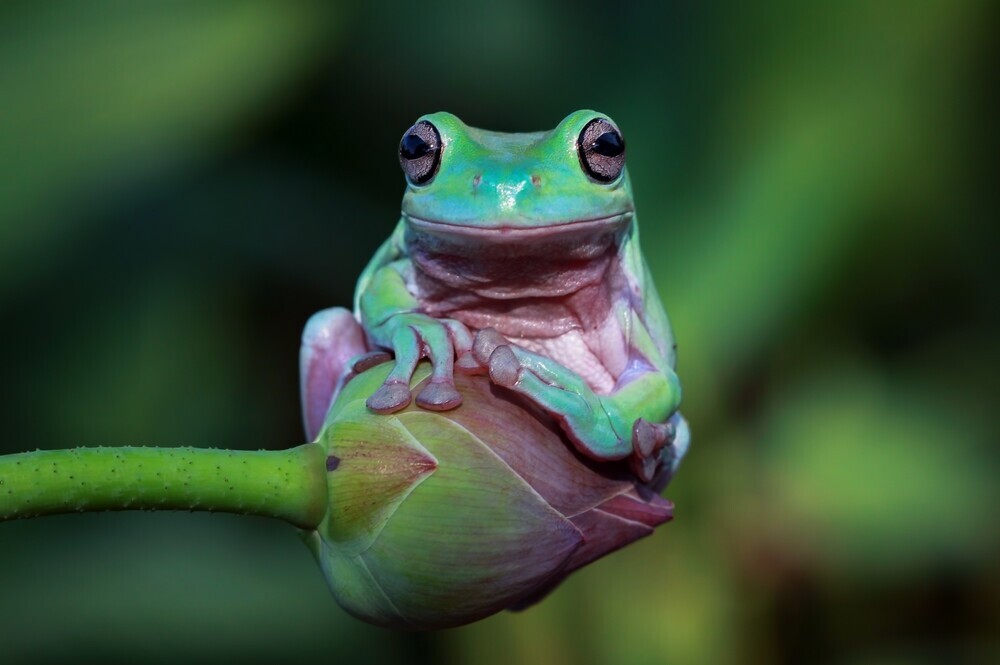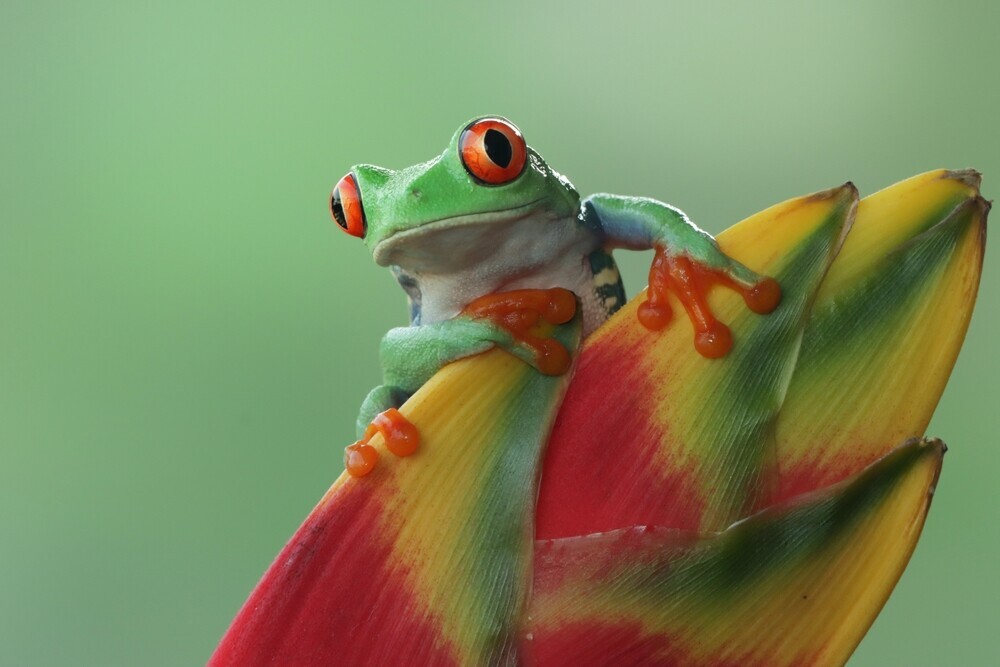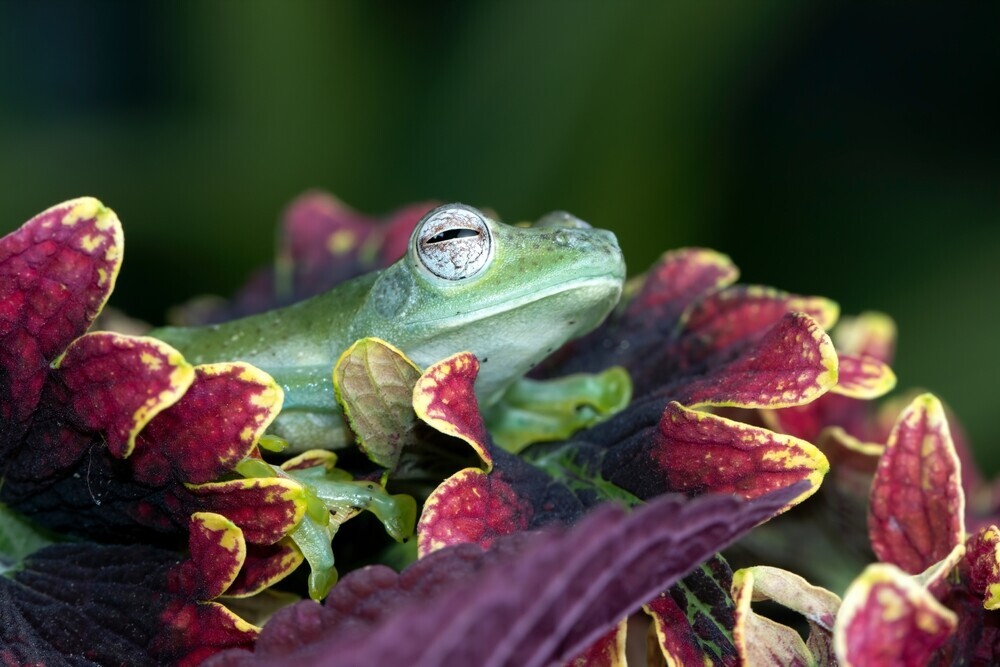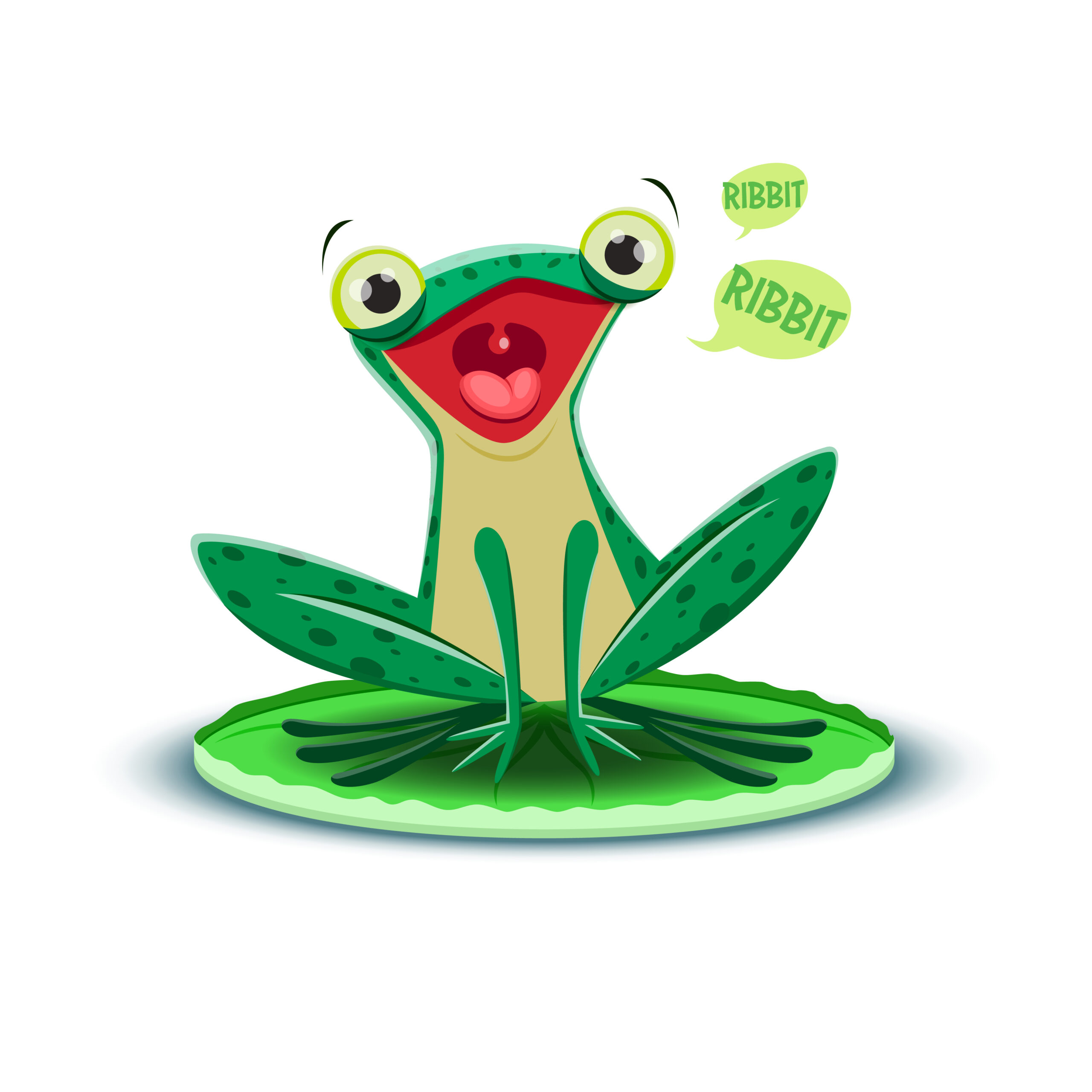Frogs might be considered one of the “canaries in the coal mine”. Their delicate skin and body systems function well until the ecosystem has problems.
The Role Of Frogs In Ecosystem Health
Frogs play a surprisingly crucial role in maintaining healthy ecosystems. These humble hoppers do more than just sit on lily pads and croak. Their presence, or absence, can tell us a lot about the environments they inhabit. Frogs are essentially nature’s early warning system, signaling possible issues within an ecosystem before they become catastrophic.

The diversity of frogs around the globe is pretty wild. With thousands of species worldwide, each adapted perfectly to its niche, frogs contribute massively to the world’s ecological wealth. They’re like the unsung heroes of our wetlands, forests, and even deserts, quietly doing their part in maintaining a balanced ecosystem.
So why should we pay attention? Well, many of our ecosystems are kind of like Jenga towers, a bit wobbly and dependent on the balance between different species. Frogs help hold it all together. If frog populations shrink or disappear, it could indicate underlying problems, such as pollution or disease, that might soon affect other species, including humans.
It’s worrying that frog populations worldwide are on the decline. This isn’t just bad news for frogs; it’s a red flag for all of us. The reasons behind these declines vary, from habitat destruction and pollution to climate change and disease. Knowing this, understanding the role of frogs in ecosystems becomes even more essential, not only for animal lovers but also for anyone keen on preserving our planet’s health.
Keen to be part of the solution? Knowing how frogs fit into the wider picture of biodiversity and ecosystem health is a fantastic start. And there’s loads more to discover about these fascinating creatures throughout this guide, so hang tight as we explore their incredible contributions to our world.
Frogs as Bioindicators: Nature’s Warning Signs
Frogs have this amazing superpower: they’re like Mother Nature’s early warning system. When something’s off in the environment, frogs often respond first. Because they have permeable skin and live both in water and on land, frogs are incredibly sensitive to changes like pollution, temperature shifts, and habitat disruption.
Think of frogs as the ecosystem’s version of the canary in a coal mine. Their presence or absence can tell us whether things are likely to go south for other species too. When frog numbers start dwindling, it might mean there’s pollution in the water or air that could eventually affect other wildlife and even humans.
Across the globe, there are notable instances where frogs have signaled environmental distress. For example, in areas where chemical pollutants have seeped into habitats, frogs are often the first to exhibit abnormalities or reduce in number. These changes can indicate lurking ecological issues that might not yet be obvious but could escalate if left unchecked.
The shifts we see in frog populations help us grasp the broader environmental impacts of climate change. Rising temperatures and erratic weather patterns could mess up frog breeding cycles and habitats, affecting their survival. These changes aren’t just about frogs—they highlight shifts that could impact entire ecosystems.
By keeping an eye on the health of frog populations, scientists can gather insights into environmental changes and potential crises. This also means that conservation efforts aimed at protecting frogs serve as a broader strategy for maintaining ecosystem health. From setting up frog-friendly habitats to reducing pollutants, actions we take to safeguard frogs benefit the wider ecosystem too.

Trophic Role: Frogs in the Food Web
Frogs play a dual role in the food web, acting as both predators and prey. This duality places them in a crucial position in the balance of many ecosystems. On one hand, they help control insect populations by preying on a variety of invertebrates. This means fewer pests for crops and reduced likelihood of disease spread by insects.
On the flip side, frogs serve as a vital food source for many animals. Birds, snakes, fish, and even mammals rely on frogs as a nutritious meal. If frogs were to disappear, it would disrupt these animals’ food supply, potentially leading to population declines or forcing them to seek alternative food sources, which could upset the existing balance of the ecosystem.
Consider this: in a stable ecosystem, frogs control insect numbers while also feeding other creatures. But when frog populations change, these dynamics shift. Without frogs regulating insect levels, some areas might see an increase in pest populations, which can lead to challenges for agriculture and human health.
Similarly, as potential prey, frogs support larger animal populations. If frog numbers drop, predators might struggle to find enough food, leading to fewer predators or forcing them to consume less preferred food, impacting other species. In regions where frog populations have dwindled, these impacts have already been observed, reminding us of their importance in maintaining ecological balance.
It’s clear that frogs keep food webs dynamic and diverse. Protecting them means not just preserving frog populations, but supporting the entire web of life that they sustain. Their role might seem small at first glance, but take them away and the ripple effects could be massive. So next time you hear a frog chorus, remember, that’s the sound of an ecosystem working as it should.
Contributing to Biodiversity: Frogs’ Genetic Treasure Trove
Frogs are a genetic marvel with countless species, each equipped with its unique adaptations to survive in diverse environments. This diversity is a treasure trove for ecosystems as it adds complexity and resilience. The genetic variation among frog species plays a critical role in the larger puzzle of biodiversity, which supports ecosystem stability and health.
Take their adaptability for instance. Frogs can live in a wide range of climates, from steamy rainforests to arid deserts, showcasing incredible evolutionary success. This adaptability not only highlights their resilience but also provides insights for other species’ survival strategies. The adaptability encoded in their genes is a testament to nature’s ingenuity and evolution’s power.
When frog species are lost, we lose more than just a few fascinating creatures. We lose part of the genetic mosaic that contributes to the adaptability and resilience of global ecosystems. This loss makes ecosystems more vulnerable to changes and disturbances, potentially altering entire food webs and habitats.
Conservation efforts aimed at preserving frog species are about more than saving frogs themselves. Efforts focus on protecting these genetic resources, which bolster overall ecological strength. By championing conservation projects, supporting habitat restoration, and protecting bio-diverse areas, we can maintain the intricate natural tapestry that is crucial for ecosystem health. Next time you think about biodiversity, remember how these little hoppers contribute massively to the genetic wealth of our planet.

Frogs in Pest Control: Natural Allies
Frogs are nature’s own pest control agents, playing a crucial role in keeping pesky insect populations in check. They munch through mosquitoes and other annoyances, reducing the spread of diseases and benefiting agriculture by protecting crops from pests.
In areas where frogs thrive, the need for chemical pesticides often sees a decline. This natural form of pest control means there are fewer chemicals polluting our soil and water systems, making the environment healthier for all living creatures.
Imagine fields and gardens where frogs patrol, keeping them free from destructive pests without the need for human intervention. The presence of these amphibians can lead to higher crop yields and less damage to plants, highlighting their value to the agriculture industry.
There are numerous success stories from communities that have embraced frogs as a solution to pest problems. Instead of relying on harmful chemicals, these regions live in harmony with local frog populations, enjoying the dual benefits of pest reduction and environmental protection.
Supporting frog habitats also supports their role in pest control. Simple actions like creating garden ponds or reducing pesticide use can make a big difference. By encouraging frogs in our environments, we not only help these amazing creatures but also create healthier surroundings for ourselves.
Amphibian Contributions to Medicine and Science
Frogs have been making quite a splash in the medical and scientific worlds. Their unique biology and physiology offer endless possibilities for research and innovation. They might be small, but they pack a punch when it comes to scientific value.
Frog skin is a remarkable thing. It’s loaded with compounds that have potential medicinal uses, offering a promising source of new antibiotics and other drugs. In a world where antibiotic resistance is a growing concern, frogs might just hold some answers in their slippery skins.
Beyond their skin, frogs are also used as model organisms in labs. Their studies have helped scientists unravel many biological processes because they are easy to breed and have transparent eggs, which makes observing early development a breeze.
Recent breakthroughs in science owe a lot to our froggy friends, right from insights into heart diseases to advancements in understanding embryonic development. Their simple yet effective anatomy makes them ideal subjects for many types of biomedical research.
The more we study them, the more we discover just how intertwined their fate is with advances in human health. Supporting the conservation of frogs isn’t just about preserving wildlife, it’s an investment in future medical and scientific achievements that could benefit everyone.
Threats Facing Frogs: From Pollution to Disease
Frogs around the globe are facing a host of challenges that threaten their populations. They’re highly sensitive to their environments, and unfortunately, this sensitivity means they’re among the first to suffer when things go wrong.
Pollution is a massive hurdle for frogs, especially chemicals in water bodies which can lead to deformities and reproductive issues. Industrial waste, agricultural pesticides, and runoff are some of the key culprits. These pollutants don’t just harm frogs but can also seep into broader ecosystems, causing widespread problems.
Habitat destruction is another pressing issue. As forests are cleared and wetlands drained, frogs lose their homes and breeding sites. This loss of habitat is devastating for species that need specific environmental conditions to thrive.
Diseases have hit frog populations hard as well, particularly the spread of chytridiomycosis, a fungal infection that has decimated numbers worldwide. Understanding and managing these diseases is crucial for their survival.
Invasive species add to the pressure, often outcompeting frogs for resources or directly preying on them. This can tilt the balance of local ecosystems, sometimes irreversibly.
Addressing these threats requires community engagement and strong policies aimed at reducing pollution, protecting habitats, and managing invasive species. Everyone can play a part by supporting local conservation efforts and being mindful of environmental practices, making a conscious effort to ensure frogs have a fighting chance against these environmental challenges.

Community and Policy Action: Safeguarding Frogs and Ecosystems
Local communities have a critical role in frog conservation efforts. By actively participating and supporting conservation measures, they can make a big difference in reversing the decline of frog populations. Simple actions like preserving local wetlands or creating frog-friendly garden spaces can help sustain these amphibians.
Education is a powerful tool in promoting frog conservation. Raising awareness about the importance of frogs and the threats they face can foster a culture of protection and respect for these animals. Schools, community groups, and environmental organizations can all contribute by sharing knowledge and inspiring action.
There are numerous policy interventions that have successfully protected frog habitats. From implementing stricter pollution controls to establishing protected areas and corridors for wildlife, these efforts show that policy can institute substantial changes. Support for such policies ensures that habitats remain intact and continue to support diverse frog populations.
Global initiatives are also crucial. Programs like the Amphibian Survival Alliance work across borders to protect amphibian habitats and counter threats. By supporting such international efforts, individuals can become part of a collective movement aimed at safeguarding not just frogs, but entire ecosystems.
Whether it’s advocating for stronger environmental policies or participating in local habitat restoration projects, everyone has a part to play in frog conservation. These efforts not only benefit frogs but also enhance overall ecosystem resilience, ensuring a healthier world for future generations.
Conclusion: Ensuring a Future for Frogs and Ecosystem Health
Frogs are key to keeping our ecosystems running smoothly. Their presence offers insight into the health of our environment, contributes to biodiversity, controls pests, and even supports medical research.
Current conservation efforts, though vital, need everyday support. Whether it’s a small backyard pond or advocating for stronger environmental laws, every action counts. These collective contributions can turn the tide, ensuring that frogs continue to be part of our ecological tapestry.
The future of frogs is intertwined with our own. By prioritizing their conservation, we protect a part of nature that is essential to life’s bigger picture. Fostering a world where frogs can thrive means nurturing environments that are stable, diverse, and resilient.
Aligning our actions with frog conservation can lead us to a more sustainable future. This journey isn’t just about safeguarding these fascinating creatures; it’s about ensuring that ecosystems remain healthy and robust for generations to come.
Continued awareness and action will pave the way for a brighter future. By making conscious choices, supporting frog-friendly initiatives, and staying informed, we uphold the essential balance needed for thriving ecosystems and all of us who rely on them.
